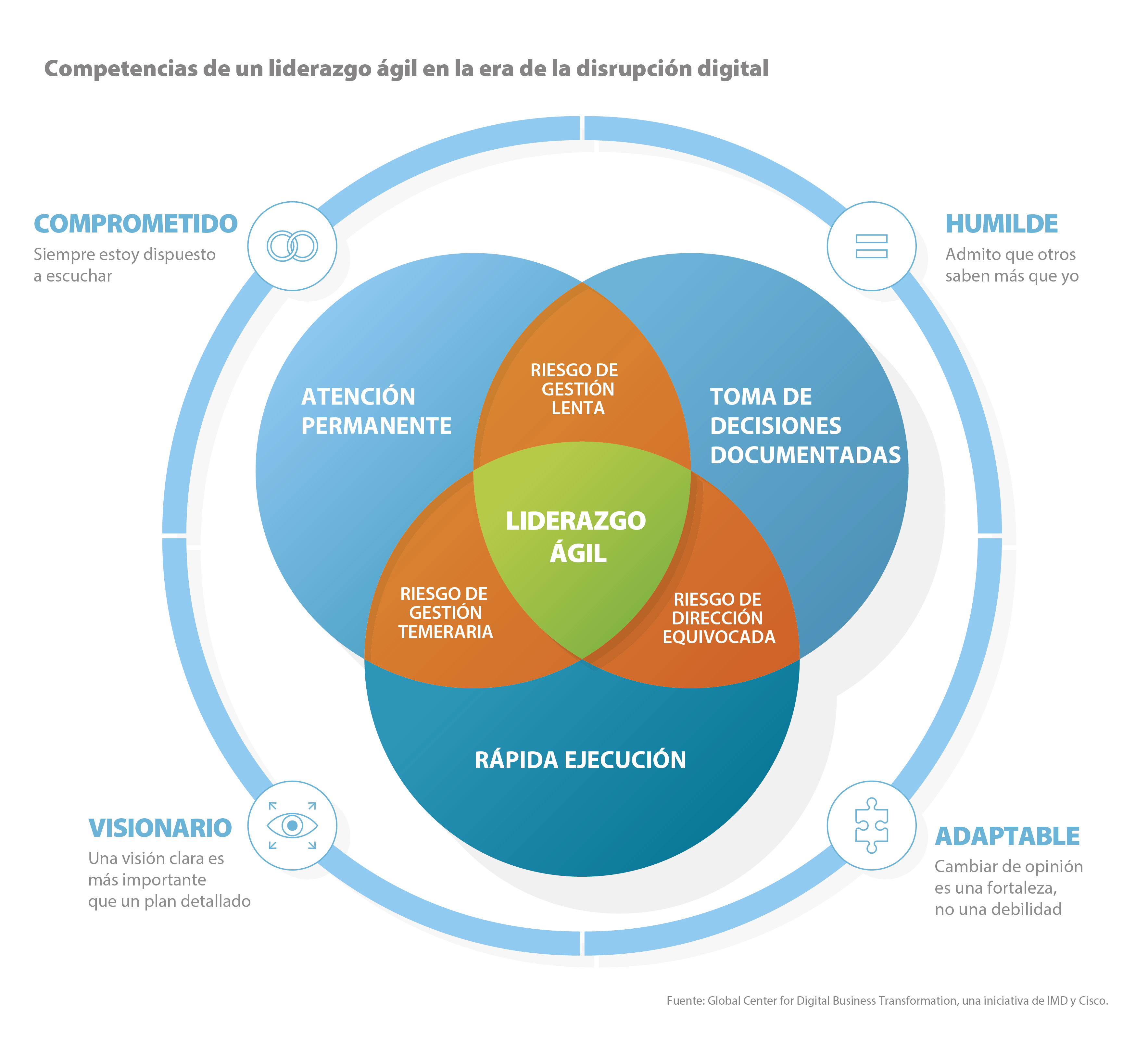‘Agile’, a new business leadership model

We are experiencing turbulent times, technological changes and profound disruption, which require new leadership and work organisation models based on adaptive capacity and continuous learning.
Even though these trends have been accelerated by the coronavirus pandemic, they are widely known and have already been marking economic and social life for several years.
Despite it, according to the study “Redefining the leadership in the digital age” (Overall centre for the Digital Transformation, 2017), less than 15% of leaders are considered “very ready” to address the demands of an environment of disrupción digital, whereas the majority of participants (almost 80%) are “beginning to get ready” or are defined as “more or less ready”. Before this situation, many companies have been lagging behind in terms of innovation and, as has been proven in recent months, they were not prepared to respond correctly to new market requirements.
In this environment it emerges the methodology Agile, that it can define as a change in the work system to comply with a project in a fast way, flexible and adapted to circumstances that brand, mostly, the rhythm of advance of the technology. The implementation of Agile demands a change in the organisational culture of the company: which empowers the teams and gives greater autonomy and interaction, resulting in greater motivation and responsibility for the professionals and, in the long run, in greater productivity and quality of the products or services that are being developed. This formula is primarily designed for projects that require rapid management, regardless of the sector of activity, through a flexible and autonomous organisation of the teams.
Between major benefits of the philosophy Agile emphasise:
1. Improve the quality of the work, reducing errors/problems.
2. Increase the consumer satisfaction .
3. Increase the degree of commitment, motivation and involvement of the teams implicated.
4. Work of faster and efficientway.
5. Increase the productivity.

In its application, is fundamental the figure of a leader (agile leadership) with skills of directing and empoderar to the teams, that it accompanies them to establish different functions, to define the strategy and objectives, and to coordinate multidisciplinary tasks. This leader will be the person in charge of increasing the agility in different areas, which is why he owes put on always at the service of the team and be present in every idea generation process to inspire creativity and to promote the adjustment and innovation.
The study “Redefining the leadership in the digital age” highlights that leaders should not only be committed to the future vision, but also be willing to learn and seek contributions from both their employees and from outside the company. Four characteristics of this leader would be “humility, adaptabilidad, visionary and commitment character”.
Source: IMD (Study redefining leadership in the digital age), BBVA

